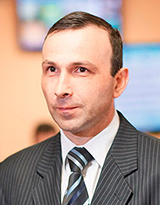ELECTRONICS, RADIOPHYSICS, RADIOENGINEERING, INFORMATICS
The purpose of this article is to analyze methods, approaches, and tools of distributed ledger technology (DLT) for working with documents in education. The objectives of the article are to analyze problems with the authentication of educational documents, develop new structural solutions using block chain technology, consider two models, and evaluate their use for educational documents.
Authentication of educational documents is carried out using state registers, which is a complex and resource-intensive process. There is an increase in the number of forged documents in the world, which calls into question the effectiveness of modern mechanisms. Distributed ledger technology (block chain) is a sustainable technological trend that affects the development and quality of the digital economy. The existence of a mechanism for verifying the authenticity of educational documents that is resistant to malicious manipulation is an urgent task that goes beyond the sphere of education, possible solutions to which are proposed to be considered in this paper.
The article provides a brief description of DLT and considers the approach of using the technology to authenticate educational documents. It consists of two main stages: the issue of a digital educational document and its verification. The role of a trusted third party in the issue and validation process is considered. The paper presents the models for issuing and validating digital documents based on distributed ledger technology, which allows one to eliminate the limitations and shortcomings of existing approaches. The effectiveness of the approach based on the proposed models is revealed. The formulated approaches can be applied in various socio-economic areas and public administration to work with similar documents.
Currently, radio monitoring systems are being actively improved in the direction of expanding the range of operating frequencies and the width of the spectrum of processed signals, which in some cases requires changing approaches to the design of their receiving devices. The purpose of the article is to substantiate the methods and circuit design options for implementing a receiver of an ultra-wide-range radio monitoring system and to justify the sequence of selecting the element base and calculating the parameters of the receiving path. The research proves expedient to choose the infradine structure of the radio receiving path as a basis, in which the frequency of the mirror channel is located far from the frequency of the main channel, so the mirror channel is easily suppressed by a simple low-pass filter. One of the main problems that arise when designing ultra-wideband radio receivers is the simultaneous provision of a large dynamic range and a low noise figure. To reduce the noise figure, a variant of constructing a path was proposed, starting with a low-noise amplifier with increased parameters of nonlinear selectivity, which is acceptable if there is a low probability of intermodulation combinations. The article suggests a receiver with an operating frequency range of 0.5–18 GHz and an analogto-digital converter with a speed of up to 10.4 GSPS. The element base was selected for the receiving devices and the main parameters of the path were calculated. A number of examples are used to analyze the ways to increase the dynamic range of a radio receiver and the influence of element base parameters on the device performance. The main technical characteristics of the radio receiver for effective operation of modern radio monitoring systems and the ways to increase the dynamic range thereof are described.
SHORT NOTES
ISSN 2708-0382 (Online)































